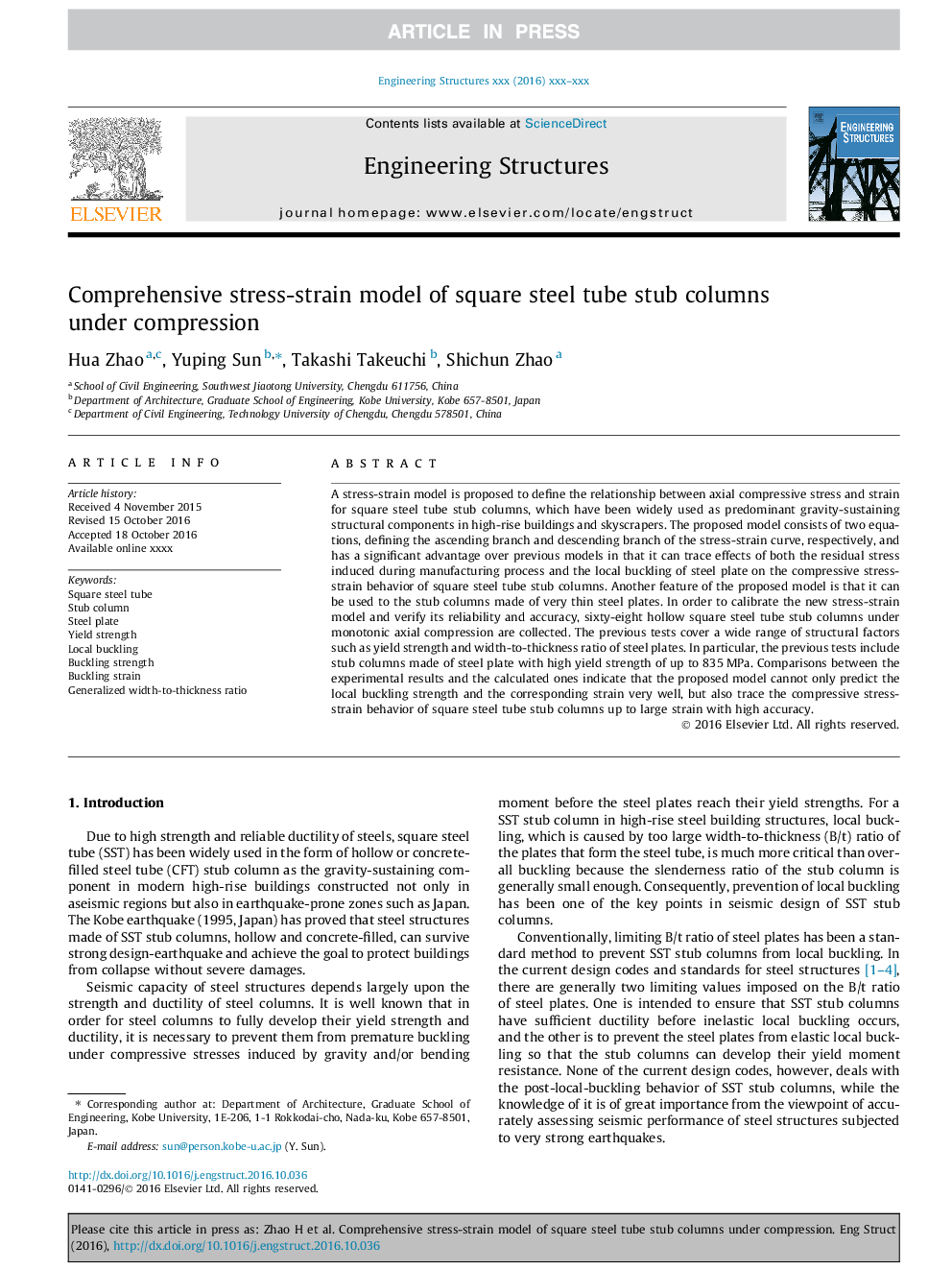| Article ID | Journal | Published Year | Pages | File Type |
|---|---|---|---|---|
| 4920613 | Engineering Structures | 2017 | 10 Pages |
Abstract
A stress-strain model is proposed to define the relationship between axial compressive stress and strain for square steel tube stub columns, which have been widely used as predominant gravity-sustaining structural components in high-rise buildings and skyscrapers. The proposed model consists of two equations, defining the ascending branch and descending branch of the stress-strain curve, respectively, and has a significant advantage over previous models in that it can trace effects of both the residual stress induced during manufacturing process and the local buckling of steel plate on the compressive stress-strain behavior of square steel tube stub columns. Another feature of the proposed model is that it can be used to the stub columns made of very thin steel plates. In order to calibrate the new stress-strain model and verify its reliability and accuracy, sixty-eight hollow square steel tube stub columns under monotonic axial compression are collected. The previous tests cover a wide range of structural factors such as yield strength and width-to-thickness ratio of steel plates. In particular, the previous tests include stub columns made of steel plate with high yield strength of up to 835Â MPa. Comparisons between the experimental results and the calculated ones indicate that the proposed model cannot only predict the local buckling strength and the corresponding strain very well, but also trace the compressive stress-strain behavior of square steel tube stub columns up to large strain with high accuracy.
Related Topics
Physical Sciences and Engineering
Earth and Planetary Sciences
Geotechnical Engineering and Engineering Geology
Authors
Hua Zhao, Yuping Sun, Takashi Takeuchi, Shichun Zhao,
